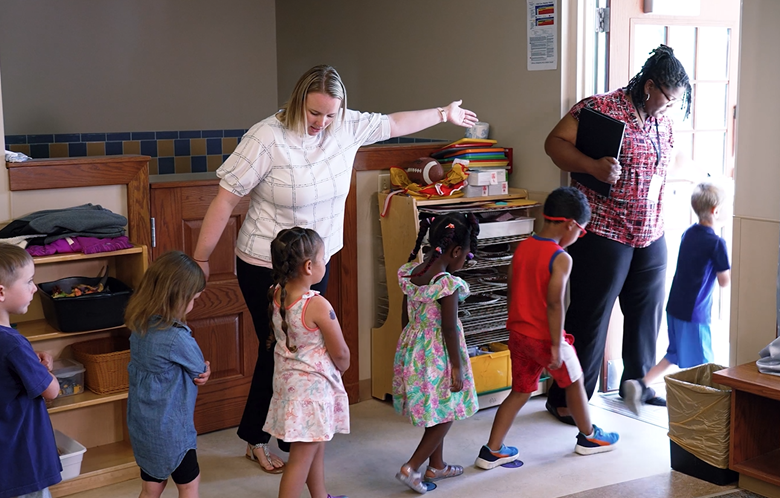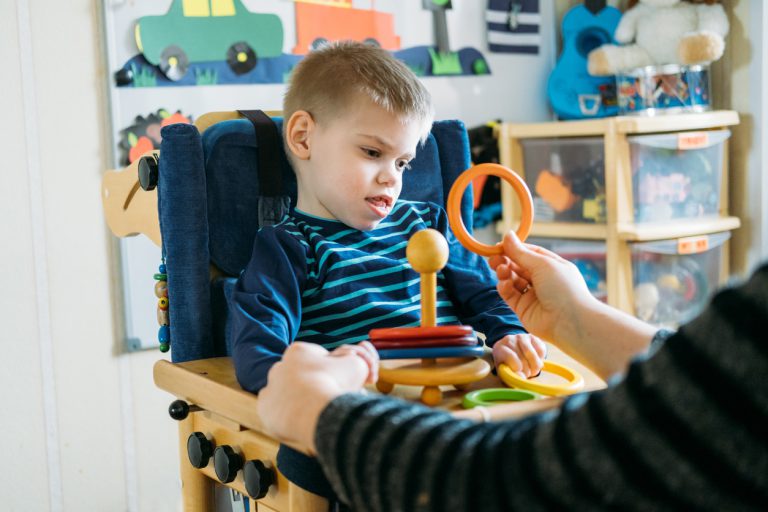All children need guidance and support during emergencies, but children with special health care needs often require more complex or individualized care. For example, they may have a hard time moving, have urgent or constant medical needs, have difficulty communicating, or have trouble transitioning between different situations. A disaster can present all these challenges at once. Knowing what to do in these situations can help maintain calm and keep you and your children safe.
You may not think any children in your program have special health care needs, but some probably do, even if you don’t use that term. In fact, nearly 1 out of every 5 children in the United States has a special health care need. Children with special health care needs require more care for their physical, developmental, behavioral, or emotional differences than their typically developing peers.
According to the Centers for Disease Control and Prevention, a special health care need may include physical, intellectual, and developmental disabilities, as well as chronic medical conditions. Examples of special health care needs include (but are not limited to):
- Asthma
- Food allergies
- Diabetes
- Epilepsy
- Developmental delays
- Autism
- Hearing or vision impairment
- Children with medical equipment such as feeding or breathing tubes, body braces, helmets, walking aides, etc.
As do your emergency planning, consider these five recommendations to ensure that the children in your program with special health care needs stay healthy and safe.
1. Keep Care Plans Current
Make sure that the care plans and/or medical action plans for all the children in your program are current. Then figure out how you can easily access and transport these files during emergencies.
All children enrolled in your program have a medical record on file. For children with special health care needs, this record should be more extensive. This document is called a care plan.
For children who might experience a medical emergency (such as anaphylaxis, seizure, hypoglycemia, asthma attack, etc.), we recommend that they have an additional document called an action plan.
Both these documents are crucial for children with health care needs. They will be required during an emergency, so decide if you will create extra copies to keep in your emergency bag or if you will grab these plans as you’re evacuating.
You may want to place these files in a plastic zipper bag to prevent them from becoming unreadable in the event of water damage. Consider attaching a current photo of the child to their care plan so that unfamiliar personnel can better identify the child during an emergency.
2. Create Personalized Evacuation Plans
Your child care program should have an evacuation plan on file. When children enroll with special health care needs, consider creating an additional plan specific to that child. With these individual plans, you won’t have to rewrite your entire plan for the program as children enroll or leave your care.
When creating this plan and rehearsing evacuation drills, seek input from the child, their parents or guardians, and the child’s health care team. Also consider what the child’s triggers are. These might be triggers for behaviors, outbursts, or even asthma attacks. Brainstorm how you might be able to help prevent those during an evacuation.
Lastly, consider the child’s level of mobility. What is the fastest and safest way to evacuate this child at the same time as everyone else? Is the child able to transport themselves, or do they need assistance to move and evacuate? Will your staff-to-child ratio accommodate the extra assistance required during an emergency?
Consider placing staff and children with impaired mobility on the ground floor of the building. In an evacuation, this eliminates the need to navigate stairs, making the exits more accessible.
health care needs. They will be required during an emergency, so decide if you will create extra copies to keep in your emergency bag or if you will grab these plans as you’re evacuating.
You may want to place these files in a plastic zipper bag to prevent them from becoming unreadable in the event of water damage. Consider attaching a current photo of the child to their care plan so that unfamiliar personnel can better identify the child during an emergency.
3. Practice Drills
In addition to your normal emergency drills, consider scheduling a time when the child’s guardians and/or health care team can come to your program and practice drills with the child. They might be able to offer recommendations to better accommodate the child’s needs.
Think about the environment of emergency drills: Are there any children in your care who struggle with loud noises or the chaos of moving people? What items might they need to be successful? No child should be less safe or less prepared due to a disability or impairment.

4. Update Your Emergency Kit
Add copies of health assessments, care plans, and medical action plans to your program’s emergency kit.
For each child with special health care needs, consider what additional supplies they use when feeding, toileting, breathing, walking or moving, and communicating, as well as any medications they take regularly or in emergencies. You may wish to consult the child’s guardians or health care team or a Child Care Nurse Consultant for help with this.
If you’re unable to obtain duplicates of these items to store in your emergency kit at all times, post a reminder to grab these items during an evacuation. Lastly, create a procedure to regularly check these supplies for expiration dates.
5. Plan for Power Outages
If the child uses any powered devices, consider adding an alternative power source or substituting a non-electrical device as a backup (with a doctor’s permission).
If anyone in your program relies on a life support device, notify your local power and water companies. Reach out to nearby police stations, fire departments, and hospitals to ask if you could use them as a backup source of power.
As you can see, children with special health care needs require personalized preparations to ensure that they stay safe during emergencies. Feel free to contact your local Child Care Nurse Consultant for help reviewing what items you might need to add to your emergency kit for the children in your care.
-

Jessica Gable
Child Care Nurse Consultant, Child Care Aware of Kansas
Jessica works as a nurse consultant from her hometown of Derby. Before joining Child Care Aware of Kansas in 2022, she worked as a pediatric home health nurse. Jessica holds a bachelor’s degree in nursing from the University of Nebraska Medical Center. In her free time, she enjoys being creative with self-portrait photography and trying out new recipes!






